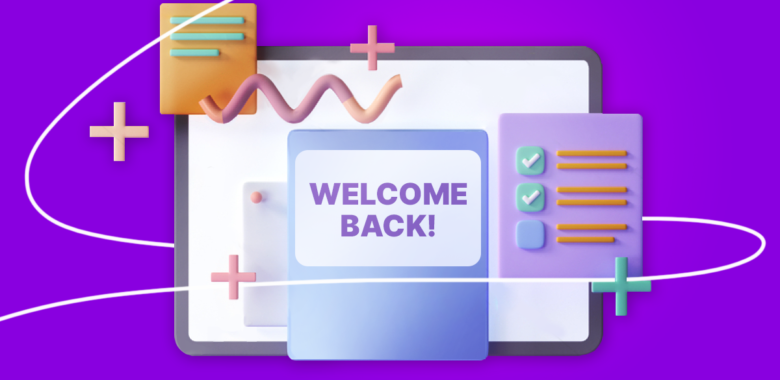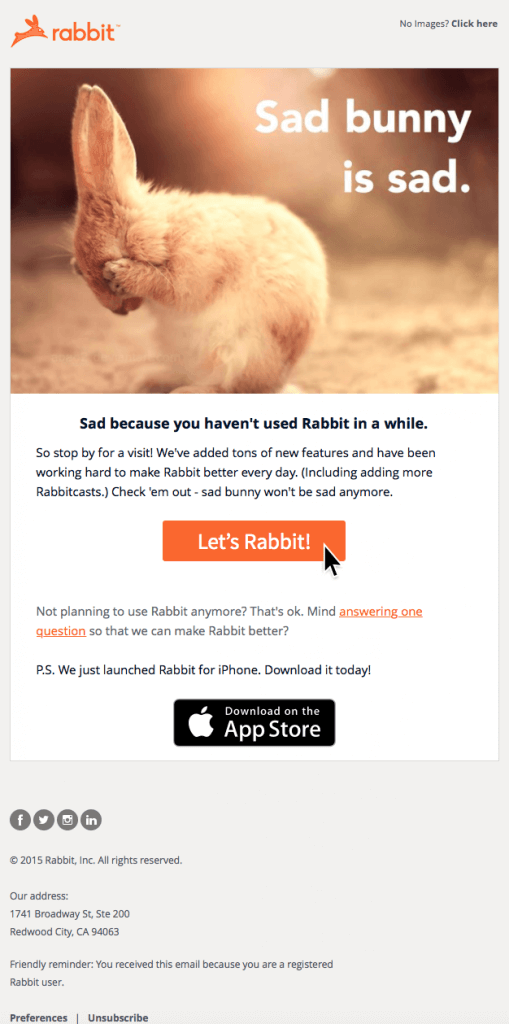Winback customer email template ideas and tips
Let’s observe general recommendations to re-engagement emails you can follow.
Keep your subject line and copy succinct
A captivating subject line can inspire your customers to open your email and see what you offer. The common strategy is using “we miss you” as a key message.
- We Miss You (And You’re Missing Out)
- We Miss You Already
- Come back to beef up dinner!
- Let’s reconnect!
- Let’s start over
- We TOTALLY need to catch up
To help your message stand out in subscribers’ overcrowded inboxes, you can use emojis. They draw the attention of the readers and sometimes help to increase open rates.
Good examples:
- Because breaking up is hard to do…💔
- Let’s rekindle the friendship 💕
- 👻 Boo… We Miss You!
- Hey, we miss you! Like, a lot! So, here is a 🎁 gift, just for you!
Another strategy is adding the customer’s name to the email subject line, making them feel it’s a personal message:
- We know it’s been a while, {NAME}. Come back now for 25% off
- WE MISS YOU, {NAME} > $15 Off Your Next Order
- {NAME}–We miss you. Here’s something you might like
- Hey {NAME}! Our new menu is PERFECT for you!
- Let’s stay together, {NAME}
- {NAME}, give us another chance. We’ll give you 2 weeks free!
No matter what strategy you choose, keep the subject line and the body of the email short and catchy. Inactive subscribers are not interested in long novel-like messages –– remember that brevity is the soul of wit, and follow this rule.
Create urgency
Creating a sense of urgency is a proven technique to make the customers make faster decisions. If you give them an attractive discount or offer in your incentive email, make it limited in time –– like in an example below.


















